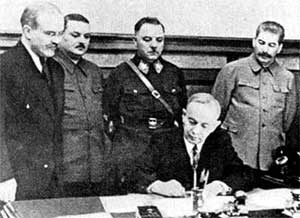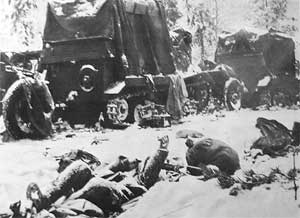
Avalanche Press
Presents
The Finnish People’s ArmyWestern literature on the Winter War of 1939-1940 usually takes the side of the Finnish government against the aggressive Soviet Union. And there’s little doubt that Josef Stalin launched an unprovoked war of conquest against the former Russian Grand Duchy. But what is seldom even mentioned is that the communist cause had the sympathy of many Finns. Lenin and other Bolshevik leaders fled to Helsinki when their first attempt to overthrow the Provisional Government failed in mid-1917. Finland had a fierce civil war of her own after the end of the First World War, in which the White Finns defeated the local Reds. Afterwards, a number of Red Finnish activists, family members, and people simply suspected of communist sympathies were murdered. Others went into exile. A new wave of exiles left Finland in 1930, when the government bowed to right-wing extremist demands and outlawed communist political activity. In 1939, less than two decades had passed and hatred still burned within the survivors. Soon after the Red Army of Workers and Peasants entered Finnish territory, Otto Vili Kuusinen declared the Finnish People’s Republic at the small resort town of Terijoki. Kuusinen’s republic is often dismissed as a joke by Western writers; William Trotter throws out such dispargements as “vaudeville” and “comic-opera.” This unquestioning acceptance of Finnish propaganda is inaccurate at best; no better than open adoption of Soviet-manufactured “historical fact.” The Red Army formed the 106th “Karelian National” Rifle Division in the fall of 1939 from Finnish-speaking conscripts residing in the border regions. This unit seems to have been the basis of the 1st Finnish People’s Rifle Corps formed immediately after Kuusinen’s declaration. The 106th’s number was re-issued to a new division formed in the Crimea in July 1940. Kuusinen’s new army handled occupation duties behind the Soviet lines in the small area of Karelia taken from the Finns. It also attracted a number of veteran Red Finns, Finnish Communists resident in the Soviet Union, and at least some legitimate Finnish volunteers fleeing Finland itself. It had two small infantry divisions and a number of independent ski detachments. Though the Finnish Civil War veterans would have been in their late 30s or older, the Finnish government called men to the colors in the same age groups. Before the war, the Red Army formed battalion-sized ski units of Finns and Karelians to help guide Soviet divisions invading central and northern Finland. One of these detachments was massacred by troops of the Finnish 16th Infantry Regiment during the battle of Tolvajärvi; according to the Finnish version, part of the unit died stumbling blindly forward into machine-gun fire in hopes of stealing sausage soup while the rest fought resolutely to the last man. This action also figures in a scenario of our Arctic Front module for Panzer Grenadier. Marshal Semyon Timoshenko ordered the two divisions of the 1st People’s Rifle Corps to the North-West Front’s operational reserve in the last week of January, and committed them to combat on his far left flank at Santajoki in the first week of March. Timoshenko gave them a division’s worth of front as their sector, indicating that the corps must have numbered more than a tiny handful of malcontents. A battalion from the corps crossed the ice of Viipuri Bay on the war’s last day, 12 March, and fought a company of tough Finnish Marines on Porkansaari Island that afternoon before the cease-fire took effect. This unpleasant chapter in Finland’s military history merits deeper study; there is clearly more here than mere “comic opera.” Winter Fury contains Red Finnish units, but when Blood on the Snow was designed — in the days before the fall of the Soviet Union — we unfortunately relied solely on Finnish sources and secondary works based on them. These made only dismissive references at best to the Red Finns. We now provided a free PDF download with these units; each enters play with its respective division. |
© Avalanche Press LTD, all rights reserved.



